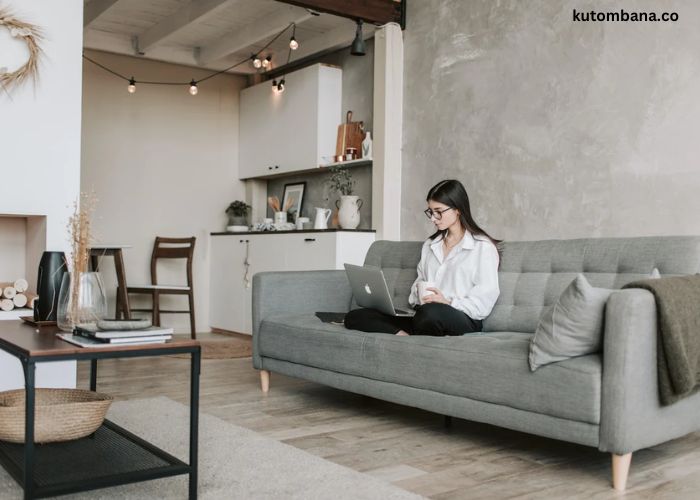In a world driven by consumerism, the minimalist lifestyle has emerged as a refreshing antidote to the chaos of excess. Minimalism is not just about decluttering physical spaces; it’s a mindset that focuses on simplifying all aspects of life to enhance overall well-being. By embracing minimalism, you can reduce stress, improve financial stability, and cultivate a more intentional, fulfilling existence. This article delves into the principles of minimalism, its benefits, and actionable steps to help you incorporate it into your life.
Understanding Minimalism
Minimalism is a lifestyle philosophy that advocates for eliminating unnecessary possessions, distractions, and commitments to create space for what truly matters. It’s about prioritizing quality over quantity and focusing on experiences, relationships, and personal growth rather than material possessions.
Benefits of a Minimalist Lifestyle
1. Reduced Stress and Anxiety
Cluttered spaces can lead to mental clutter, increasing stress and anxiety levels. By simplifying your surroundings, you create a calming environment that promotes peace of mind.
2. Financial Freedom
Minimalism encourages mindful spending and intentional purchases. By cutting out unnecessary expenses, you can save money, pay off debt, and work toward financial independence.
3. More Time for Meaningful Activities
Owning fewer possessions means less time spent cleaning, organizing, and maintaining them. This allows you to focus on meaningful activities like hobbies, relationships, and self-improvement.
4. Enhanced Focus and Productivity
A clutter-free environment fosters clarity and concentration, making it easier to stay productive and focused on your goals.
5. Improved Health and Well-being
Minimalism promotes a healthier lifestyle by encouraging simplicity in diet, exercise, and self-care routines. Less stress and fewer distractions contribute to overall well-being.
6. Environmental Benefits
By consuming less, you reduce waste and contribute to a more sustainable planet. Minimalism supports eco-friendly living by promoting conscious consumption and reducing reliance on disposable goods.
How to Embrace a Minimalist Lifestyle
1. Declutter Your Living Space
Start with your physical environment by removing items that no longer serve a purpose or bring joy. Use the KonMari Method, where you evaluate each item based on whether it “sparks joy.” Donate, sell, or recycle items that no longer add value to your life.
2. Simplify Your Wardrobe
Adopt a capsule wardrobe by selecting versatile, high-quality clothing pieces that match your style and needs. This reduces decision fatigue and ensures you always have something suitable to wear.
3. Mindful Consumption
Before making a purchase, ask yourself:
- Do I need this item?
- Will it add long-term value to my life?
- Can I live without it?
Practicing mindful consumption helps break the cycle of impulsive buying and ensures that your purchases align with your values.
4. Digital Declutter
Minimalism isn’t limited to physical items; it extends to digital spaces as well. Unsubscribe from unnecessary emails, organize your files, and delete apps or social media accounts that consume excessive time and mental energy.
5. Simplify Your Schedule
Avoid overcommitting to activities that drain your time and energy. Prioritize tasks that align with your goals and values, and say “no” to obligations that don’t serve a meaningful purpose.
6. Focus on Experiences Over Material Possessions
Rather than accumulating things, invest in experiences that create lasting memories, such as traveling, spending time with loved ones, or pursuing personal growth activities.
7. Adopt Minimalist Financial Habits
- Track your expenses to understand your spending habits.
- Eliminate unnecessary subscriptions and memberships.
- Build an emergency fund to achieve financial security.
- Invest in high-quality, long-lasting items rather than cheap, disposable goods.
8. Practice Gratitude
Minimalism encourages appreciation for what you already have. Keeping a gratitude journal can shift your mindset from always wanting more to being content with less.
Overcoming Challenges in Minimalism
1. Fear of Letting Go
Many people struggle with sentimental attachments to items. To overcome this, take photos of meaningful objects before donating them and remind yourself that memories live in experiences, not things.
2. Social Pressures
Minimalism may feel countercultural in a society that values material wealth. Stay confident in your choices and surround yourself with like-minded individuals who support your minimalist journey.
3. The Temptation to Accumulate
Even after decluttering, the urge to buy new things can return. Regularly reassess your needs and practice mindful purchasing to prevent clutter from creeping back.
Minimalism Beyond Possessions
Minimalism isn’t just about owning fewer things—it’s a holistic lifestyle approach that simplifies all aspects of life:
1. Minimalist Diet
- Eat whole, natural foods.
- Plan meals in advance to reduce food waste.
- Avoid overconsumption of processed foods and unhealthy snacks.
2. Minimalist Relationships
- Prioritize quality over quantity in friendships and social circles.
- Surround yourself with positive, uplifting people who align with your values.
- Let go of toxic relationships that drain your energy.
3. Minimalist Work-Life Balance
- Set boundaries to avoid overworking.
- Focus on meaningful work rather than unnecessary tasks.
- Delegate tasks and prioritize essential commitments.
Conclusion
Embracing minimalism is a transformative journey that leads to greater clarity, fulfillment, and happiness. By simplifying your surroundings, finances, relationships, and daily routines, you create space for what truly matters. Minimalism isn’t about deprivation—it’s about intentionality and making conscious choices that enhance your quality of life. Start small, be consistent, and enjoy the freedom that comes with a minimalist lifestyle.

